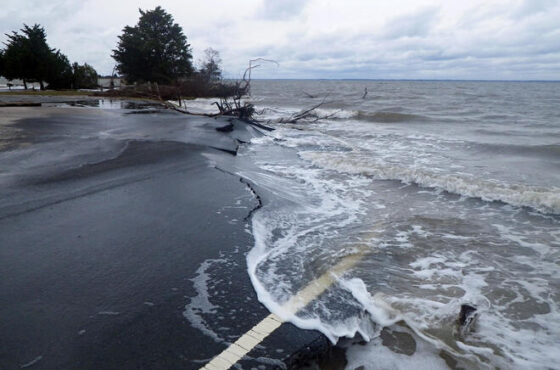Keep Your Cool This Summer With Energy Efficiency
Published by the Natural Resources Defense Fund
With summer on the way, it’s time to take steps to make sure your home will be comfortable without wasting energy—or overheating your wallet—as the temperature rises.
The Natural Resources Defense Council is working to make sure that the government’s energy efficiency standards developed or updated over the past year for many types of products that help keep you cool, including ceiling fans and portable air conditioners, take effect on schedule. Updating national efficiency standards on a regular basis means that when it’s time to purchase new cooling equipment, you can be assured it meets at least minimum energy-saving performance criteria while saving money and energy.
But in the meantime, here are some tips to keep your cool in the warmer months:
Seal it up
Don’t let that cool air—and your hard-earned dollars—sneak out the window! Windows, doors, and other parts of your home’s envelope are often leaky (see the graphic below for more examples), and many buildings don’t have enough insulation in their walls or attic. Sign up with your utility or a local contractor for a home energy audit, which will give you an idea of exactly where you’re wasting the most energy. Then seal the leaks, install weather-stripping, and add more insulation to make sure you get to enjoy your home in comfort while lowering your energy bills.

DOE
Look for the ENERGY STAR®!

EPA
If you’re in the market for a new air conditioner, make sure you choose a product with the ENERGY STAR label. ENERGY STAR room air conditioners use around 15 percent less energy than conventional models while central air conditioners use about 8 percent less– which keeps more cold cash in your pocket. And ENERGY STAR ceiling fan/lighting combinations are a whopping 60 percent more efficient than conventional fan/light units thanks to improved motors, blade designs, and lighting. Even better, choose a product recognized as ENERGY STAR Most Efficient, which signifies you are choosing the top energy-saving products on the market that use the least amount of energy.
Speaking of ceiling fans…

DOE
Staying comfortable when it’s hot outside is more about how the air feels on your skin than the actual temperature. A ceiling fan can help a room feel up to 10 degrees cooler and uses just 10 percent of the energy of a central air conditioner, so you save money when you don’t have to set your thermostat as low to keep your cool. Make sure your fan is set in the forward (counterclockwise) direction so that it will pull up the cooler air from the ground and blow it back down onto you, creating a breeze to keep you comfortable. (And bonus: you can switch the direction of a ceiling fan to clockwise in the winter to clockwise, which will circulate warm air in the room.) Just remember to turn the fan off when you leave the room as a fan doesn’t do any good if there’s nobody in the room to enjoy that breeze.
Put your window coverings to work
One of the simplest ways to help beat the heat is to keep your curtains and blinds closed during the day when the sun is at its hottest. If your windows are older or your home gets a lot of sun, the heat gain through the windows can greatly contribute to the indoor temperature. Closing curtains and blinds will help keep the room cooler and your energy bills lower. It’s not rocket science, but it works.
Invest in a programmable thermostat—and use it properly!

Using a programmable thermostat is a great way to make sure your home stays cool while you’re there to enjoy it, but that your air conditioner isn’t working overtime when you’re away. If you have a fairly regular schedule, it’s easy to set your thermostat for your home to be warmer when you’re not there, but have it kick on so that it’s cool and comfortable by the time you walk in the door. And if you use a ceiling fan, you may be able to set your thermostat a few degrees higher without the room feeling warmer, which saves even more. Check out the ENERGY STAR website here for tips on how to properly set your thermostat to make the most of it. A programmable thermostat is beneficial to your winter cooling bills too: when used properly, the right thermostat settings can save you up to about $180 in annual energy costs.
Mythbusting, with physics
There’s a common misperception that having your air conditioner run all day to keep your home at a constant temperature will use less energy than setting your air conditioner to a warmer temperature during the day. Let’s put that myth to rest! The cheapest way to use your air conditioner is to turn the thermostat up for when you’re not home.

EPA
Curious about why this is the case? The answer is physics, specifically the second law of thermodynamics. Simply put, it means that heat always flows from a hotter environment to a cooler environment until it reaches a state of equilibrium. This is true for your home, too. The larger the temperature difference between your home and outside, the more heat flow there will be. If your thermostat is set to 65 all day and it’s 85 degrees outside, more warm air wants to flow into your home, which means your air conditioner has to work hard throughout the day to replenish the cool air. But if you set your thermostat higher, say at 81 degrees on that 85-degree day, as your house warms there will be less heat flow from the outside to the inside because your house is closer to that state of equilibrium. It is true that your air conditioner will need to kick on and run for a little longer to cool your home before return. But air conditioning systems operate most efficiently at full speed for a longer period of time, rather than cycling on and off to keep your house cool while you’re away. This also underscores the importance of having a well-sealed and insulated home to keep the cool air in and the warm air out.
Check with your utility
Many utilities and local governments offer rebates or discounts for energy audits, adding insulation or air sealing, and upgrading your air conditioning equipment. Call your utility for more information now and be ready when the full heat of summer arrives.
Taking advantage of these cooling tips can help ensure the summer heat doesn’t burn a hole in your bank account.
Read the full article at: https://www.nrdc.org/experts/lauren-urbanek/keep-your-cool-summer-energy-efficiency




